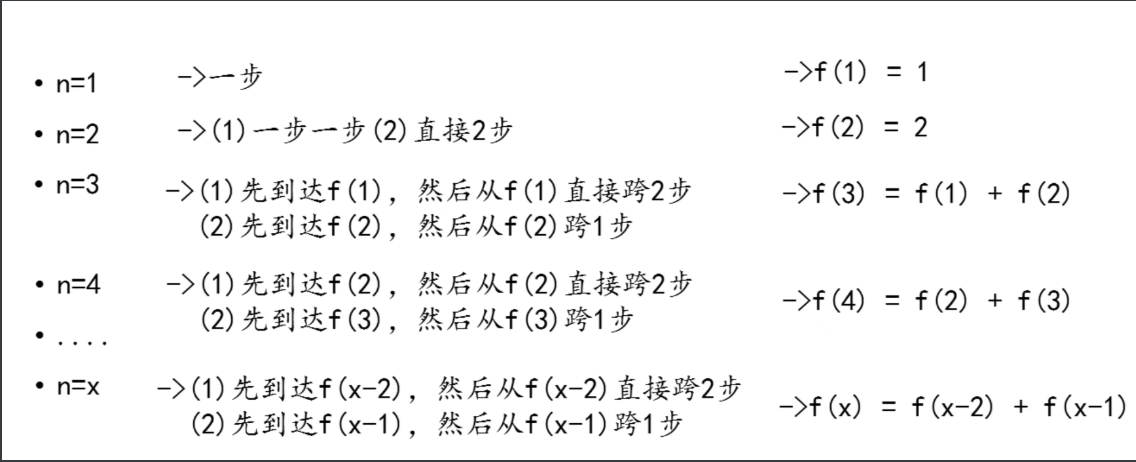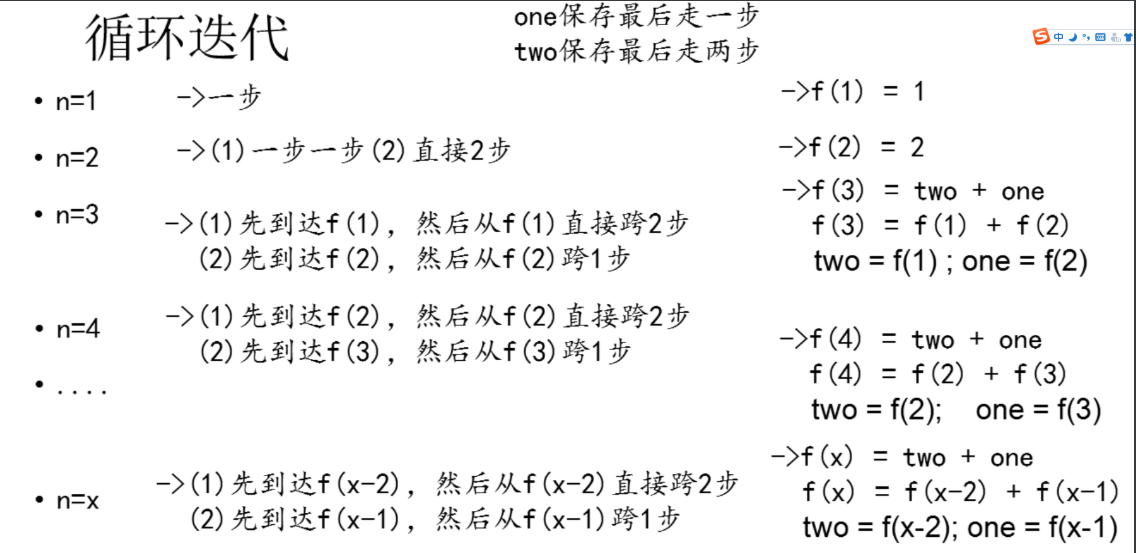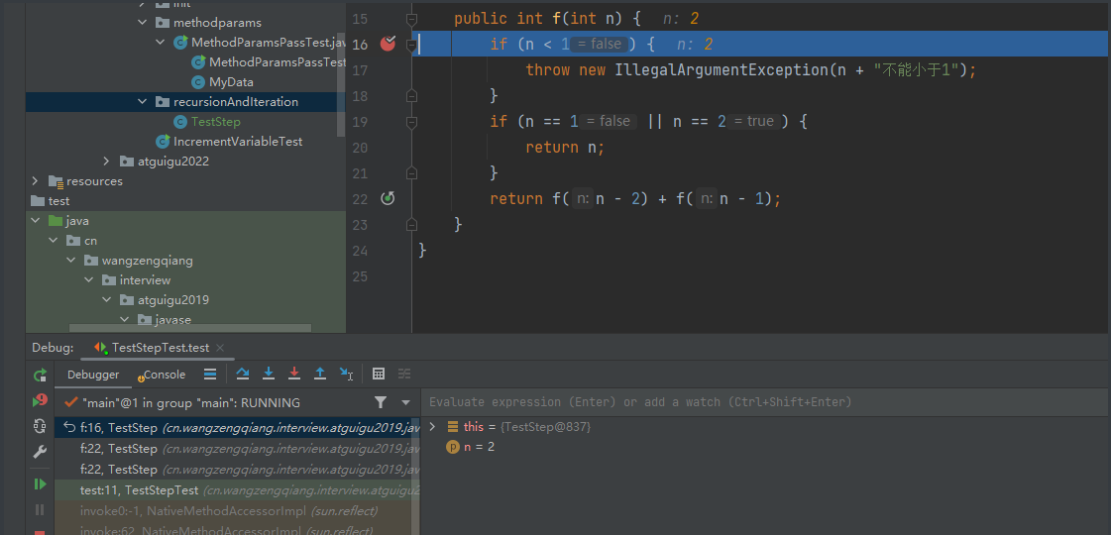编程题:有n步台阶,一次只能上1步或2步,共有多少种走法?
递归

循环迭代

核心代码
- 递归
- TestStep.java
public class TestStep { /** * 实现f(n):求n步台阶,一共有几种走法 * * @param n * @return */ public int f(int n) { if (n < 1) { throw new IllegalArgumentException(n + "不能小于1"); } if (n == 1 || n == 2) { return n; } return f(n - 2) + f(n - 1); } }- TestStepTest.java
public class TestStepTest { @Test public void test() { System.out.println(new TestStep().f(1)); System.out.println(new TestStep().f(2)); System.out.println(new TestStep().f(3)); System.out.println(new TestStep().f(4)); System.out.println(new TestStep().f(5)); } @Test public void testCostTime() { long start = System.currentTimeMillis(); System.out.println(new TestStep().f(40));//165580141 long end = System.currentTimeMillis(); System.out.println(end - start);//642 ms } } - 迭代
- TestStep2.java
public class TestStep2 { /** * 实现f(n):求n步台阶,一共有几种走法 * * @param n * @return */ public int loop(int n) { if (n < 1) { throw new IllegalArgumentException(n + "不能小于1"); } if (n == 1 || n == 2) { return n; } int one = 2;//初始化为走到第二级台阶的走法 int two = 1;//初始化为走到第一级台阶的走法 int sum = 0; for (int i = 3; i <= n; i++) { //最后跨2步+最后跨1步的走法 sum = two + one; two = one; one = sum; } return sum; } }- TestStep2Test.java
public class TestStep2Test { @Test public void test() { System.out.println(new TestStep2().loop(1)); System.out.println(new TestStep2().loop(2)); System.out.println(new TestStep2().loop(3)); System.out.println(new TestStep2().loop(4)); System.out.println(new TestStep2().loop(5)); } @Test public void testCostTime() { long start = System.currentTimeMillis(); System.out.println(new TestStep2().loop(40));//165580141 long end = System.currentTimeMillis(); System.out.println(end - start);//2 ms } }
小结
方法调用自身称为递归,利用变量的原值推出新值称为迭代。
- 递归
- 优点:大问题转化为小问题,可以减少代码量,同时代码精简,可读性好;
- 缺点:递归调用浪费了空间,而且递归太深容易造成堆栈的溢出。
- 迭代
- 优点:代码运行效率好,因为时间只因循环次数增加而增加,而且没有额外的空间开销;
- 缺点:代码不如递归简洁,可读性好
源码地址
彩蛋
- 1.通过debug观察递归的堆栈信息

